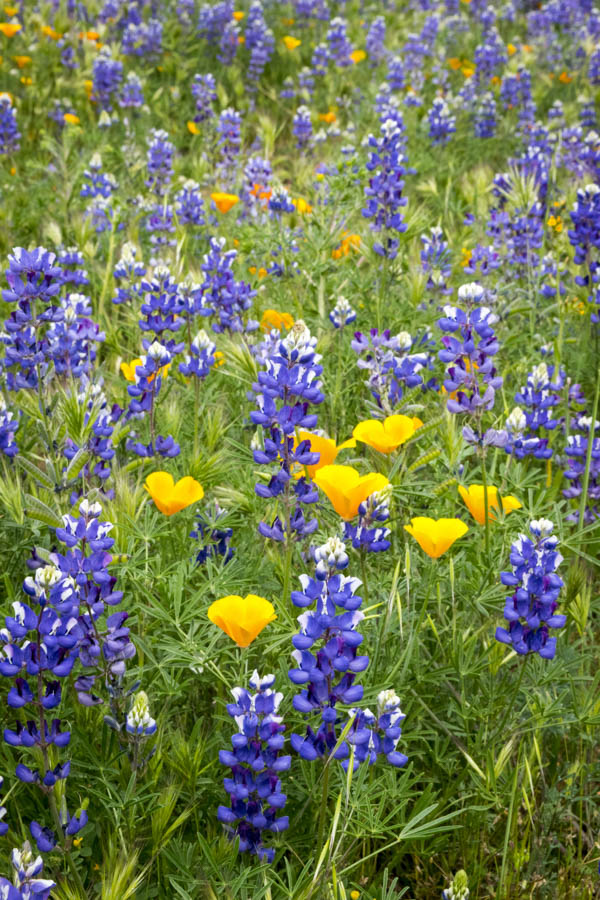California Color Flower Seed Mix for Vibrant Native Wildflowers

GardenZeus receives commissions for purchases made through links in this post.
If you’ve never grown California native wildflowers, the California Color Flower Seed Mix from Botanical Interest is a perfect way to start. It provides an inexpensive, time-efficient, low-water-use, low-maintenance option for winter and spring color. It’s especially useful for mass planting, and for difficult areas such as hillsides and non-irrigated areas. Flowers can also be grown in margins, raised beds, or as low-water borders for vegetable gardens. Some or many of the 16 popular species may fail to germinate or thrive in any given soil, microclimate, or environment, but with many resilient, reliable species included, at least a few to several should do well in any Southern California area.
Many California native landscape plants don’t tolerate soil fertility or frequent watering, and suffer or die in the rich, moist, microbially active soils needed for vegetable gardens and non-native ornamentals. This native wildflowers mix is ideal for well-drained, drier, average soils, from moderately acidic to neutral or slightly alkaline.
In mild winter areas, plant seeds directly outdoors from fall through early spring. Irrigate planting areas beginning 2 or more weeks ahead to germinate and remove weed seedlings. Plant seeds directly into moist or pre-irrigated soil, or before rainy periods. Scatter seeds at the rate of about one seed every few inches, or about 10 to 20 seeds per square foot. Rake seeds in gently, or cover with a thin layer of 1/16-inch to 1/8-inch of fine soil or sand. Mist or water gently to avoid washing away seeds, about once every other day before germination, and often enough to keep soil moist for the first few weeks weeks after planting and until seedlings have multiple leaves.
In addition to providing exuberant color starting about 50 to 75 days after germination, these native wildflowers will feed native and beneficial insects, and may attract pollinators if planted near vegetable gardens. Be forewarned that if allowed to go to seed, flower varieties may reseed themselves, sometimes in nearby areas or even at a distance from the original plantings.
All of the wildflowers included can be grown as annuals; some may re-bloom or persist as perennials in suitable climates and with proper care. While more drought-tolerant than most non-native species, these wildflowers may need supplemental water every 1 to 3 weeks while establishing, especially in sandy soils or during warm-to-hot weather. After they are established, during dry periods within the first several months to a year after planting, many of these wildflowers will perform best with supplemental water about once every 4 to 8 weeks in clay soils or every 2 to 4 weeks in sandy soils during cool weather, and about every 2 to 3 weeks in clay soils and 1 to 2 weeks in sandy soils during warm-to-hot weather.
If you’re used to gardening or landscaping with non-native ornamentals and flowers, you may be surprised how effortless and rewarding it can be to grow these native wildflowers. Enjoy!
GardenZeus has customized growing information by plant and zip code. To get started, enter your zip code here.
Other articles of interest relating to California wildflowers include:
Planting and Growing California Poppy
California Poppy: Tips and Precautions for Care and Watering
Sky Lupine: A Lovely California Native Wildflower
